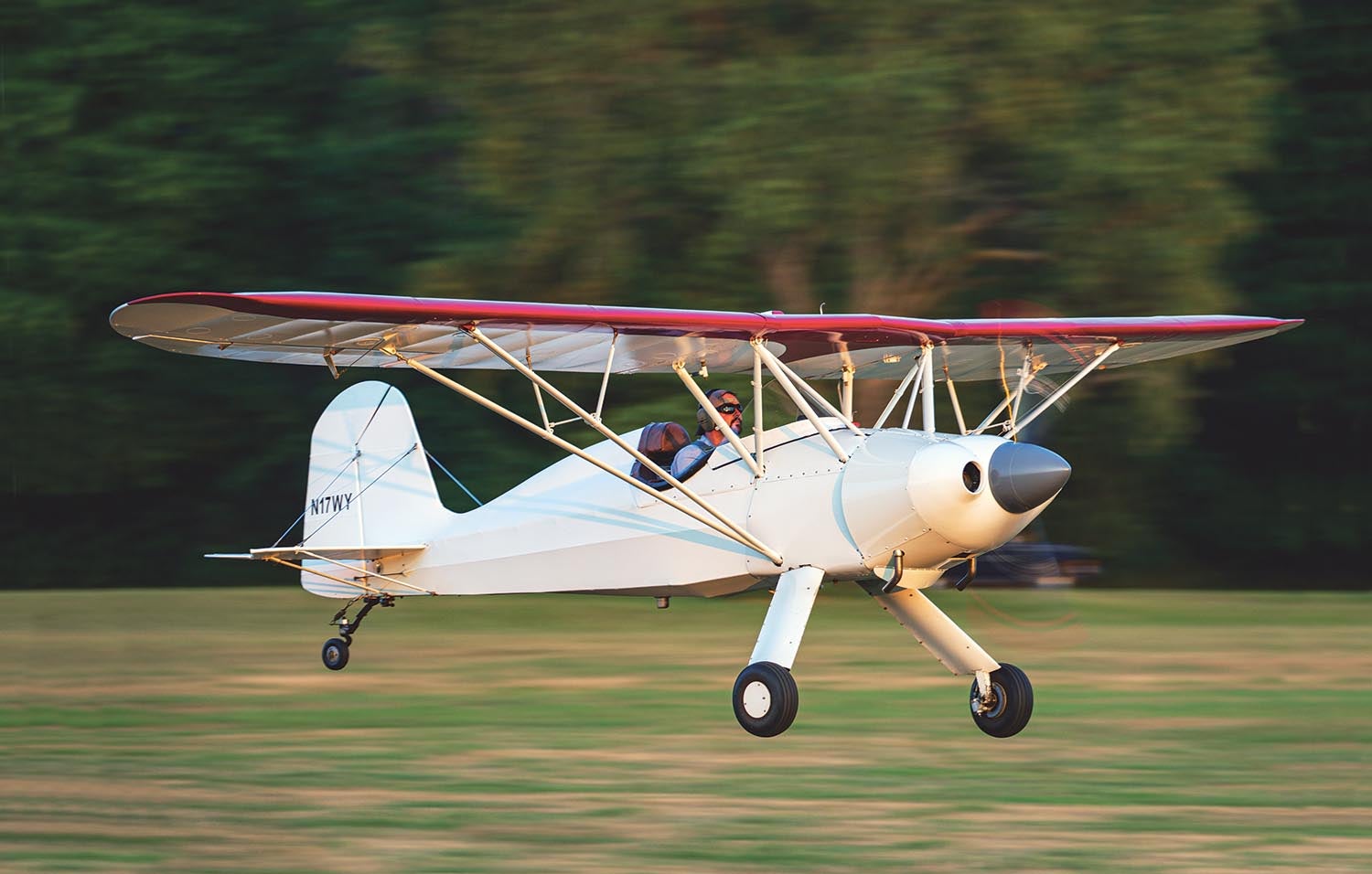
One of the fun things about our annual pilgrimage to AirVenture is seeing uncommon or rare aircraft. Sometimes it’s a new and rare bird at Oshkosh or a unique aircraft at a random airport on the way to or from. While making our way to AirVenture 2023, we stopped in at Brodhead Airport (C37) in Wisconsin. That is where we happened upon a Stolp SA-500 Starlet. It’s one of those planes that make you stop and say, “That thing is as cute as a bug. I wanna fly it!”
For those not familiar with it, the Starlet was designed by Lou Stolp. The name may be familiar as he also designed the more common Starduster and Starduster Too. The Starlet is plansbuilt, and the plans are still available from Aircraft Spruce & Specialty Co. It is described in the information packet that comes with the plans as “a very clean, low-drag aircraft that generates the appearance of speed and performance, even when sitting on the ramp.”
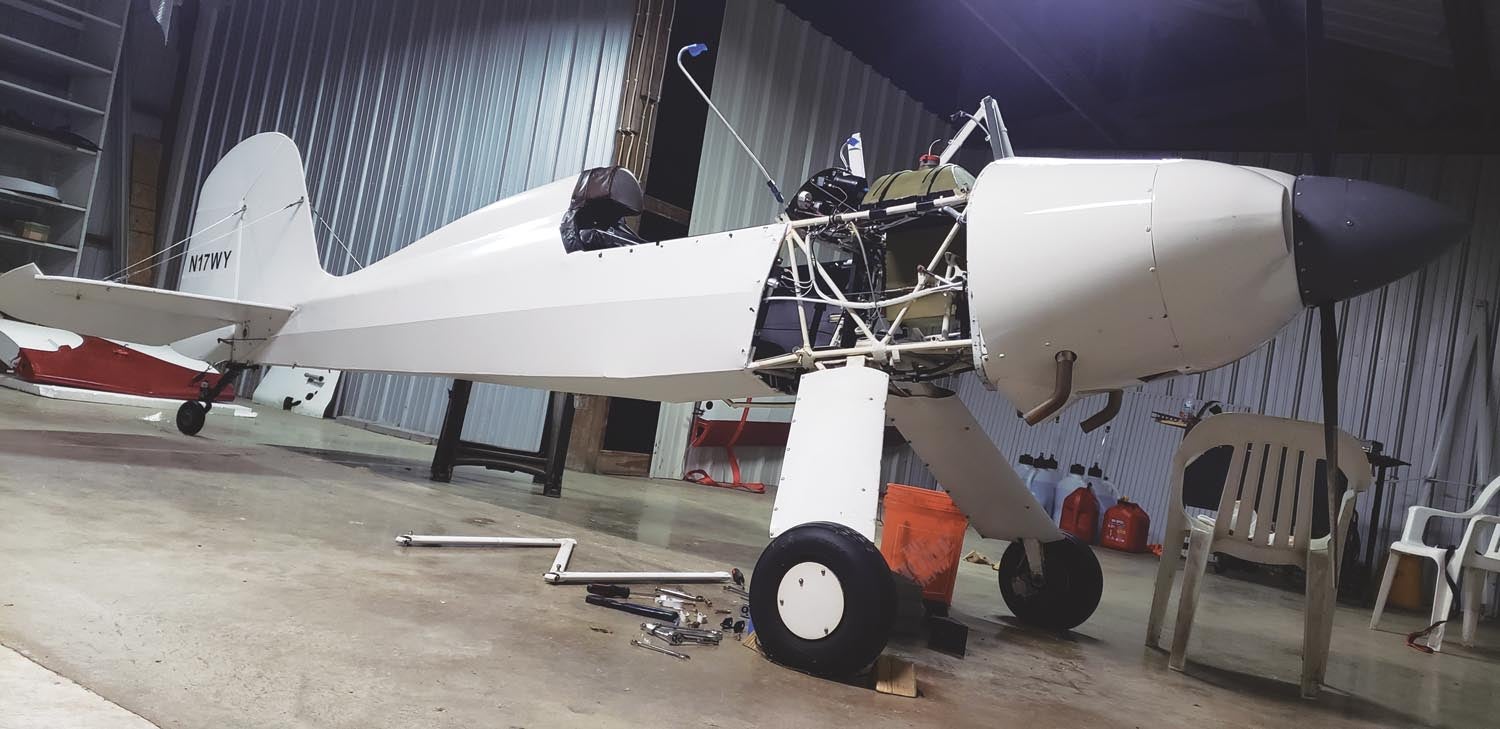
The Starlet features a deep roomy cockpit and a strut-braced elliptical parasol wing, which has a rakish swept-back planform. The fuselage is welded 4130 steel with spruce spars and plywood ribs, all covered with fabric of course. The wing is a Clark YH airfoil design (the H stands for high lift). Originally designed to be powered by a Volkswagen engine, various powerplants have been fitted, ranging from 65 to 125 hp. This specific model is powered by a 100-hp Corvair conversion. The cockpit is 20 inches wide with plenty of room for a larger pilot. The tubing at the rear of the cockpit was curved to fit a back cushion or parachute. The cantilevered landing gear is steel tubing with coiled springs for compression. The gear legs are faired with spats reminiscent of a Focke-Wulf Fw 56 Stösser or Westland Lysander.
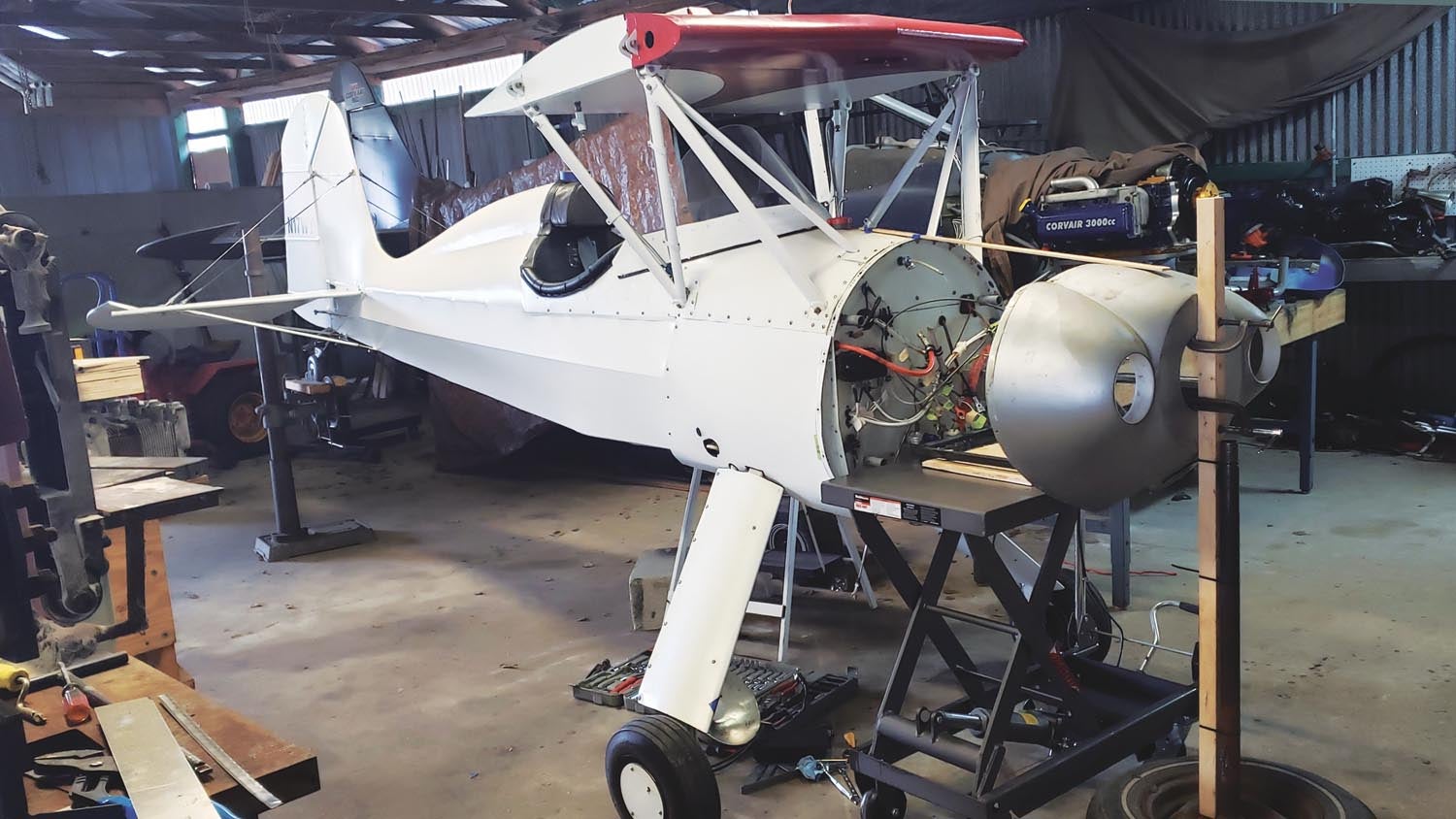
The plane that sparked our interest is owned by Justin Peters of central Ohio. When he was learning to fly in a Champ in 2017 (which makes the authors’ taildragger-loving hearts incredibly happy), his CFI bought this particular Starlet from a neighboring airport. The aircraft was started by the original builder from plans in the 1970s. He completed the fuselage and some of the other pieces before the project came to a standstill. Fast-forward to the late 1980s, and the project was picked up by a gentleman named William “Bill” Young. Over the next 10-plus years the plane grew wings and was finally completed. It was only flown a few hours, and Bill moved on to other projects. It sat for about 17 years before moving on to a new owner. The new owner removed its original Continental engine to sell it, and again the airframe sat. As conversations around the airport go, one crazy idea led to another, which again led to another, and Justin eventually was given the Starlet as long as he could sort out a new engine to put on it. Justin remembers the discussion as “slap an engine on it and go fly!” If only things were that easy, right? Seems like an easy day’s work!
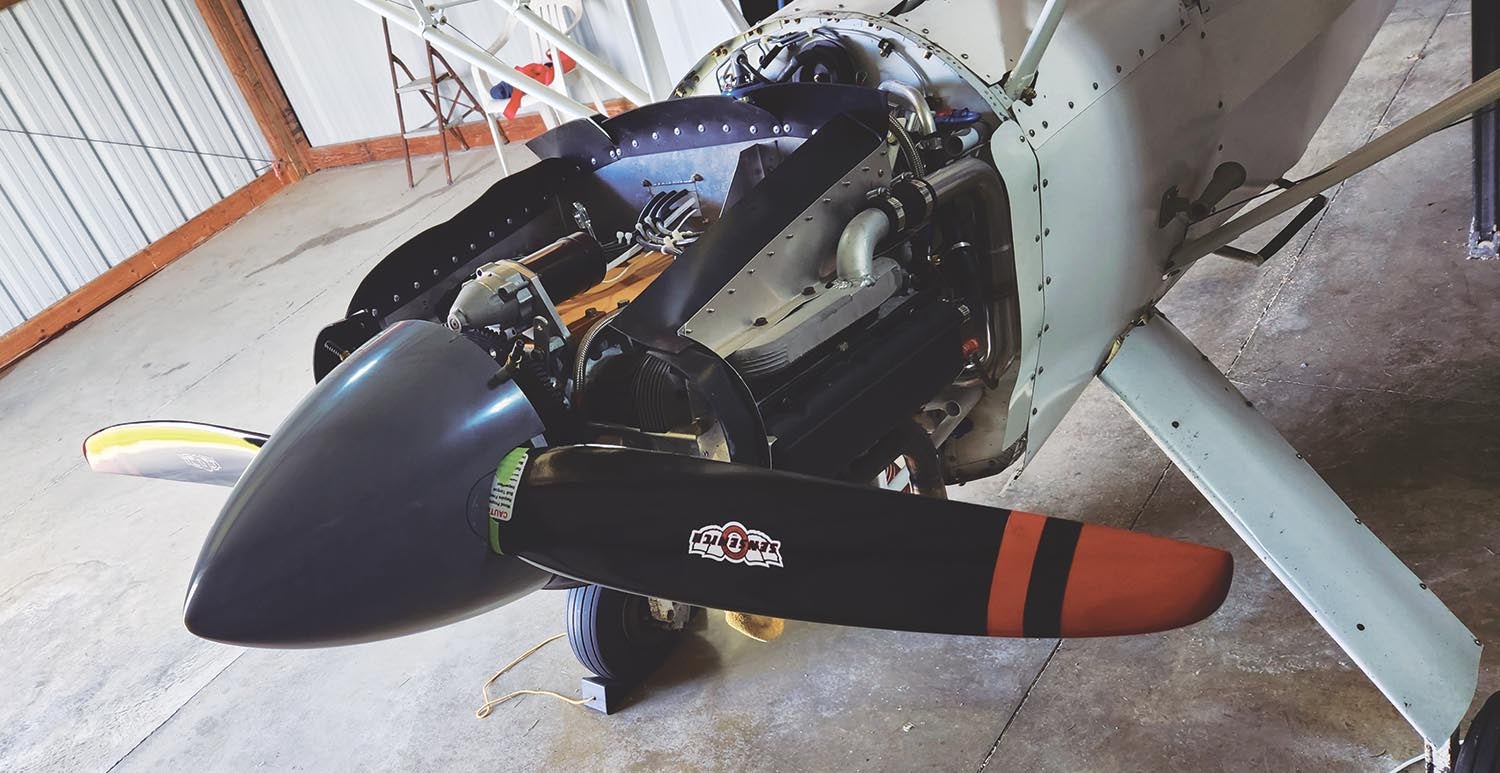
Corvair Power
Given that the Starlet is an Experimental, there certainly were a number of options for powering it. After considering several of them, a close friend at the same airport, Shad Bell, suggested considering a Corvair conversion. Shad has a Pietenpol powered by one, so he is quite familiar with them. The choice was made, the wings came off and Justin trailered it to his house to begin work on it. Fortunately, it fit into his walk-out basement pretty easily. He found an appropriate engine core and started talking with the acknowledged Corvair engine expert William Wynne, who agreed it would be a good fit. Next was a trip to a Corvair College in 2018 that eventually led to trailering the fuselage down to William’s shop in Florida. This allowed them to work with the actual airframe, calculate the weight and balance, set the thrust line and design and weld up an engine mount, as well as build a cowl. If you notice, the cowl has round air inlets and was specifically designed for a Corvair engine application, just not for the Starlet! It wound up being a very good fit after some modification.
Back in Ohio, everything came together. There is a wonderful pilot report written by the legendary Art Scholl in 1970, and Justin read it at least 30 times getting ready for his first flight. As almost all of his flight experience had been in Champs, his more experienced friends stepped in to help. The planned first flight didn’t go well: After several taxi tests, the designated pilot tried to take off, only to have it swerve violently side to side and almost go off the runway. This certainly was frightening, and no one wanted to see it get wrapped up into a ball.
Everything was put on hold while trying to sort out the issues. The next day, everyone taxied the airplane but couldn’t replicate the problem. Shad taxied it back and forth without issues, applied the power and took it up. Success! Turns out the first pilot had rather large feet and while applying rudder pressure was inadvertently jabbing the toe brakes.
After the initial wringing out, it was Justin’s turn to fly his baby. With his experience being primarily in slower Champs, he took an understandably cautious approach. After getting comfortable with it and used to the faster speeds, he had a wonderful time getting to know it. In comparing it to a Champ, he says, “It’s like a station wagon compared to a dirt bike. It is very responsive—light and quick to respond.” On the ground, while his Champ had a tendency to track straight and easily, the Starlet is sensitive; he keeps his feet on the pedals until it drops below walking speeds.
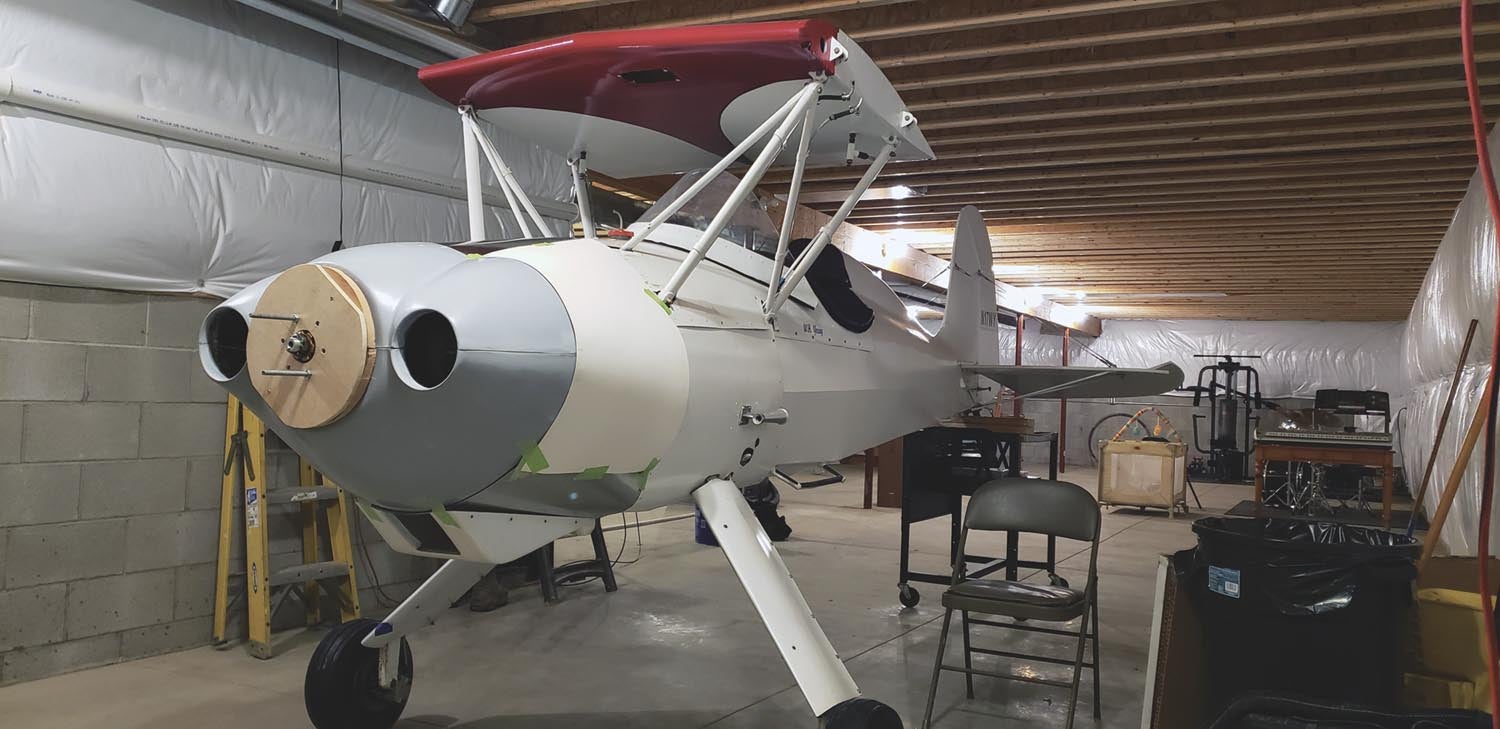
It is a speedy little thing, and he comes over the fence at about 80 mph. Cruise speed is about 120 mph, while stall speed is between 45 and 50 mph. It is fairly tolerant of winds, and on a cross-country flight last summer he landed with a crosswind in the 20-knot range without any issues. The stall itself is rather abrupt, however, and certainly should be respected.
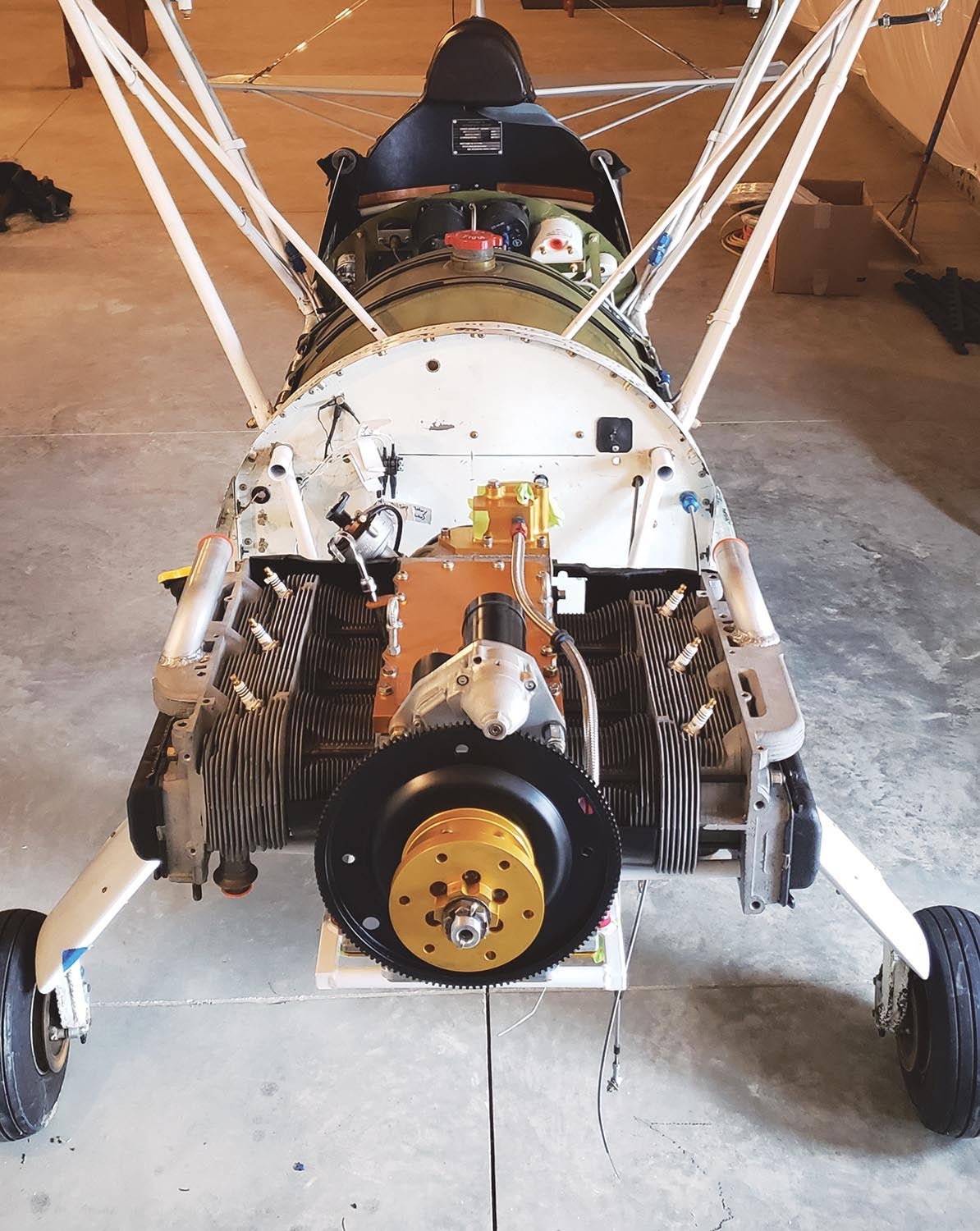
Being light, and with a 100-hp Corvair engine, it gets off the ground in less than 500 feet and lands similarly short. The Corvair burns between 6 and 7 gallons per hour, and with 11 gallons in the wing tank and 7 in the fuselage tank, it can comfortably go for hour-and-a-half legs, two hours if one plans carefully. The Corvair was paired with a Warp Drive propeller originally, but for aesthetic reasons it was eventually switched out to a Sensenich prop that performs equally as well. At full throttle the engine turns at 3300 rpm, while at cruise it is turning 3100 rpm.
While it isn’t the latest and greatest of fast-glass aircraft, there is something absolutely adorable and charming about this little plane. It is certainly unique, and the swept elliptical wing makes the whole aircraft. When you see it flying, as soon as that planform catches your eye you know what’s going by.
Art Scholl’s Pilot Report
Any discussion about the Stolp Starlet wouldn’t be complete without including famous aerobatic pilot Art Scholl’s pilot report. He had the opportunity to wring out a newly built Starlet in 1970 and wrote about it. Art described it as “living up to its moniker, being a sprightly lithe beauty.” He described the cockpit as very comfortable and roomy with great visibility and said it’s easy to taxi with benign ground handling qualities.
Art did flutter testing, ultimately diving the Starlet to 230 mph without any adverse issues. He did discuss how the aircraft was neutrally stable and the control stick would stay in any position it was placed regardless of aircraft attitude. It spun faster to the left than the right but recovered uneventfully. Snap rolls were also faster to the left than right. We don’t know if that had to do with engine choice (prop rotation) or not, as the particular Starlet featured here hasn’t been spun.
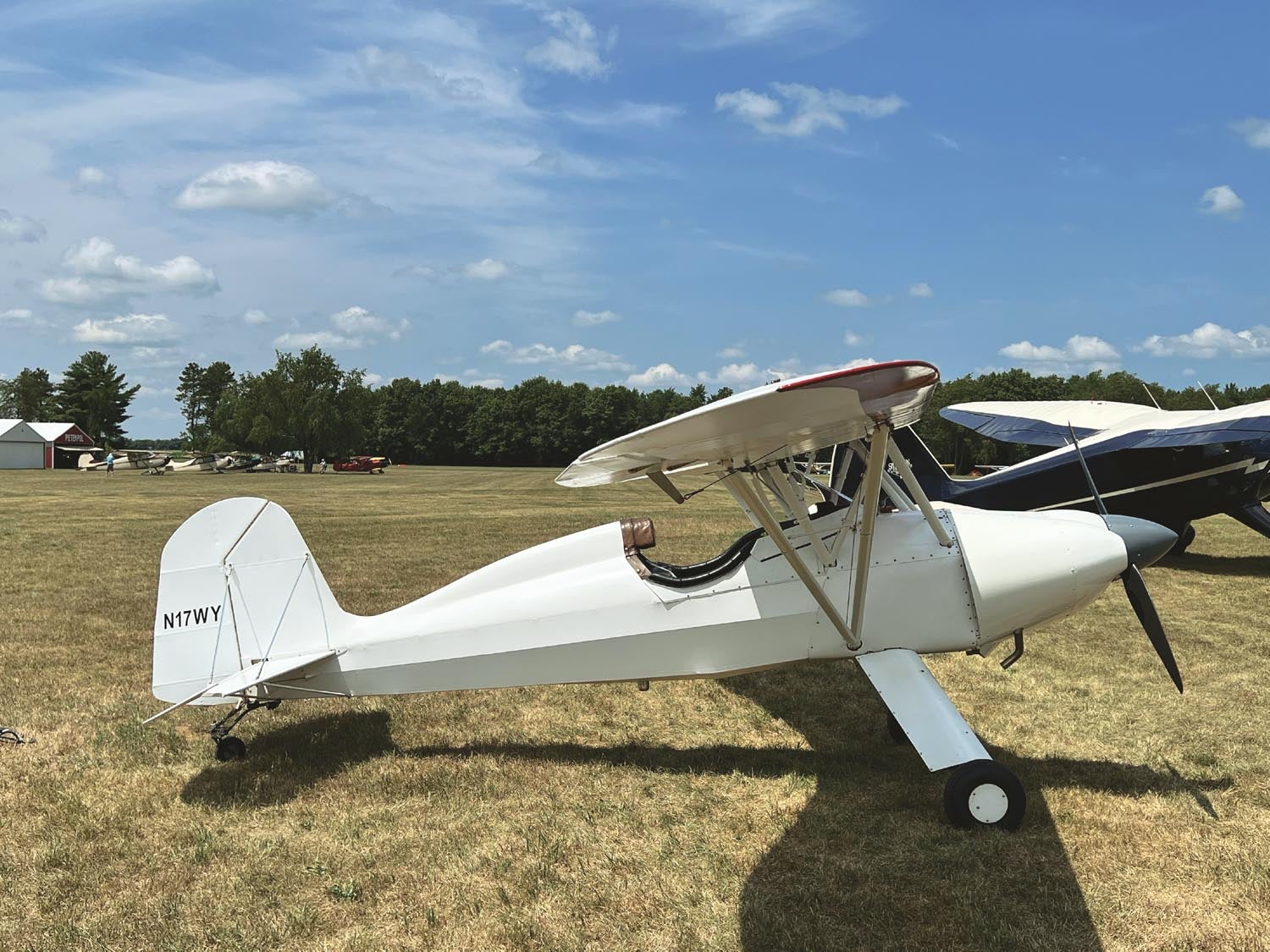
Art felt the Starlet he flew had very light controls without a lot of feedback, whether inverted or upright. The only thing he felt was markedly unusual was that on the vertical downline of hammerhead-type maneuvers it would tuck under, making his downlines 30° past vertical rather than straight down. He never did find the reason for this but felt it was a minor issue in an otherwise delightful aerobatic mount. Granted, you would want to get to the bottom of that if you were using this for competition aerobatics. He did mention he found the light controls a bit unsettling on landing as there wasn’t as much feedback as he would have liked.
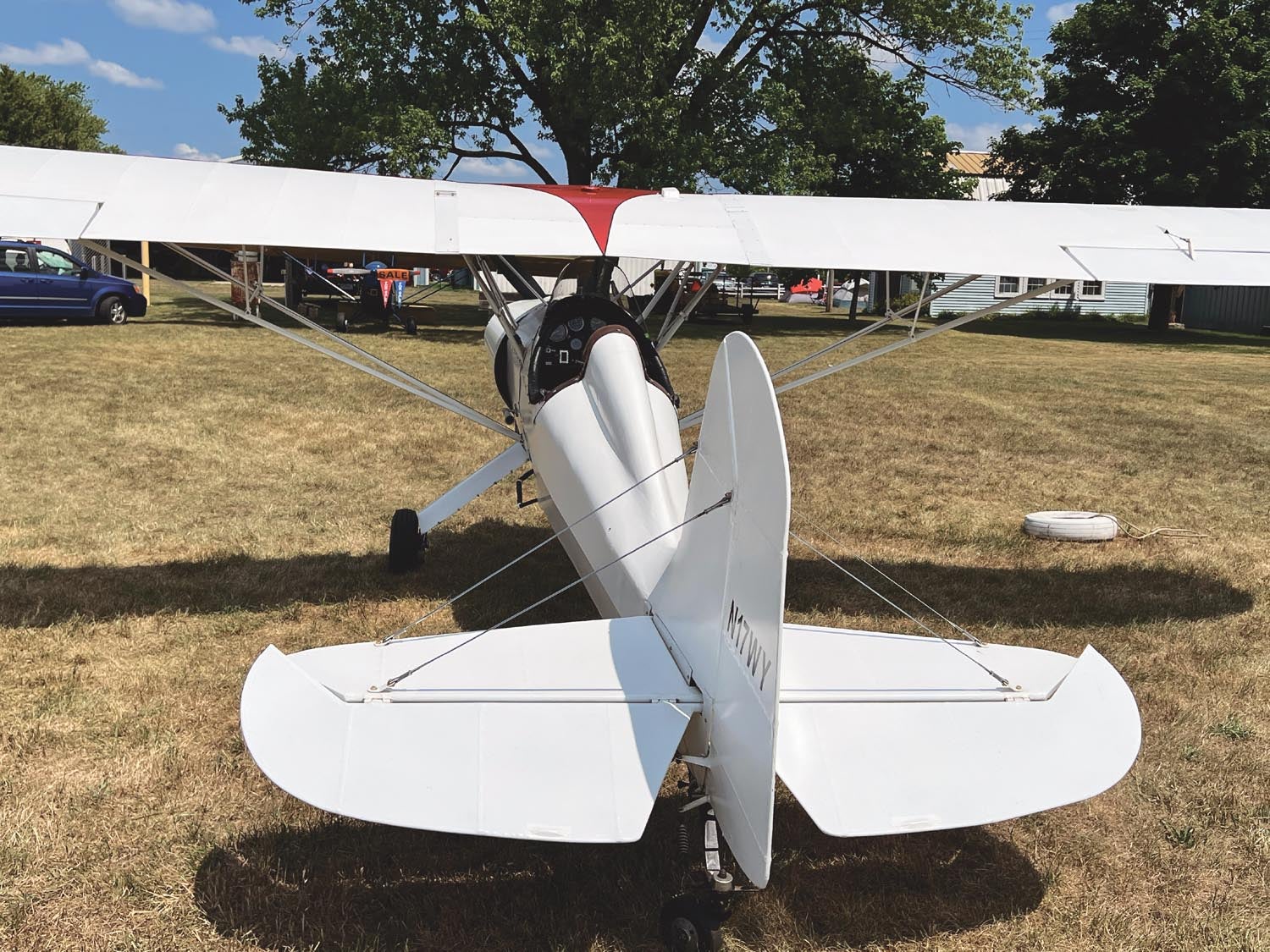
Justin doesn’t fly aerobatics, but his friend Shad does. After flying it upside down he’s been trying to talk Justin into trading it to him, so he must have liked it. The Corvair engine doesn’t have an inverted fuel or oil system, so all aerobatics are positive maneuvers only. It also does not have an air-oil separator, so it spits some smoke or oil at the top and bottom of loops. But what is flying without cleaning some oil off an airplane’s belly now and then?
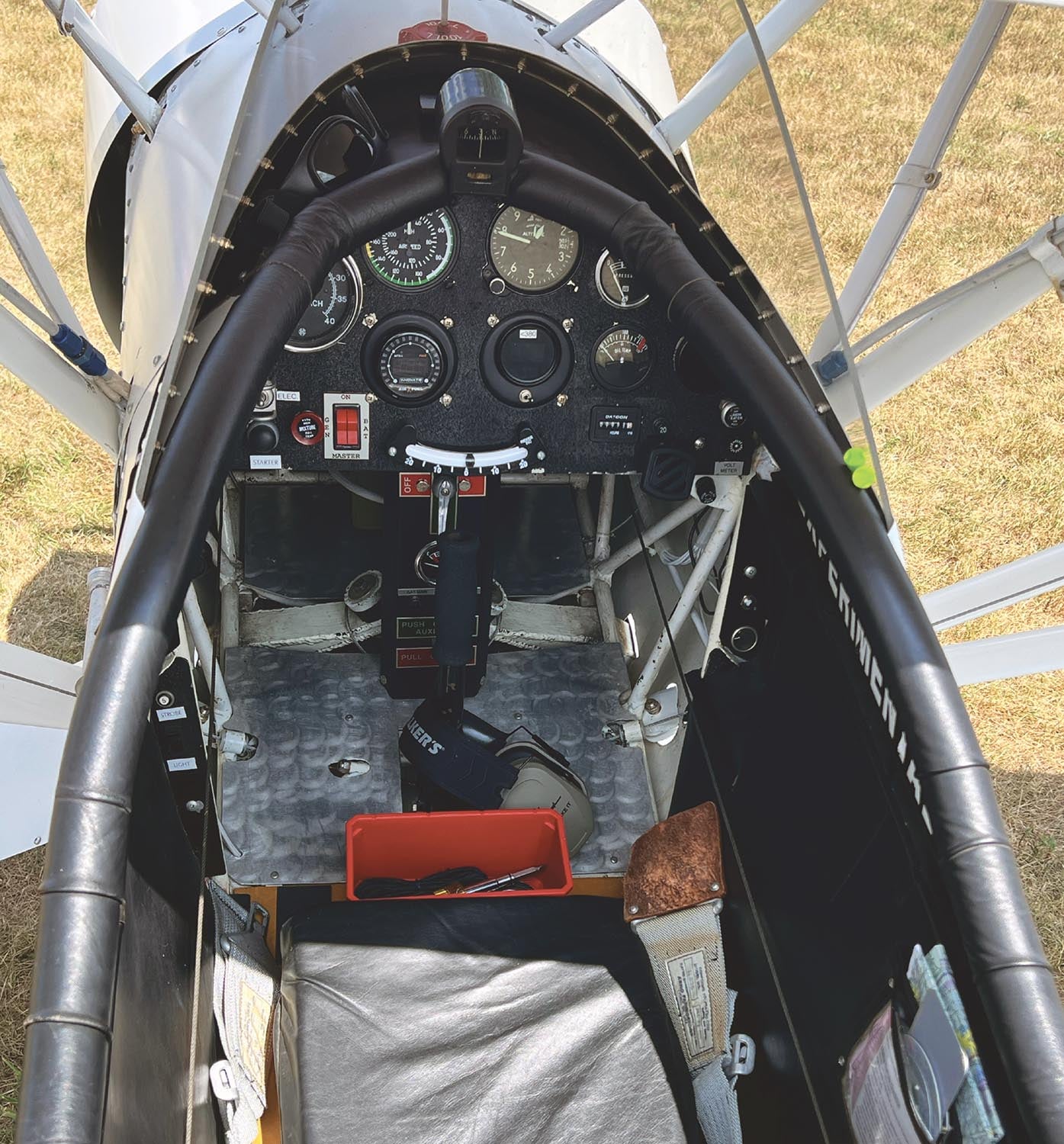
A year ago, the original builder passed away. His family reached out to Justin and were kind enough to send him boxes of photographs and memorabilia their father had saved over the years related to the Starlet.
We always like to ask people the three things they like about their aircraft and the three things they would change. For Justin, he loves how unusual the Starlet is. There are only a few in existence and his is the only one with a Corvair engine. The beautiful wings really set it apart, making it easily identifiable and lending an art deco nod to the golden age of aviation.
The only thing he would possibly change is the steel spring landing gear. Historically it hasn’t been the strongest gear and Lou Stolp designed a revision to strengthen it, which has been incorporated into this Starlet. Justin hasn’t had any issues with the gear but is a little concerned about how it would fare with a hard landing. In a perfect world, he would change that out to something more robust, but he doesn’t have a specific type in mind.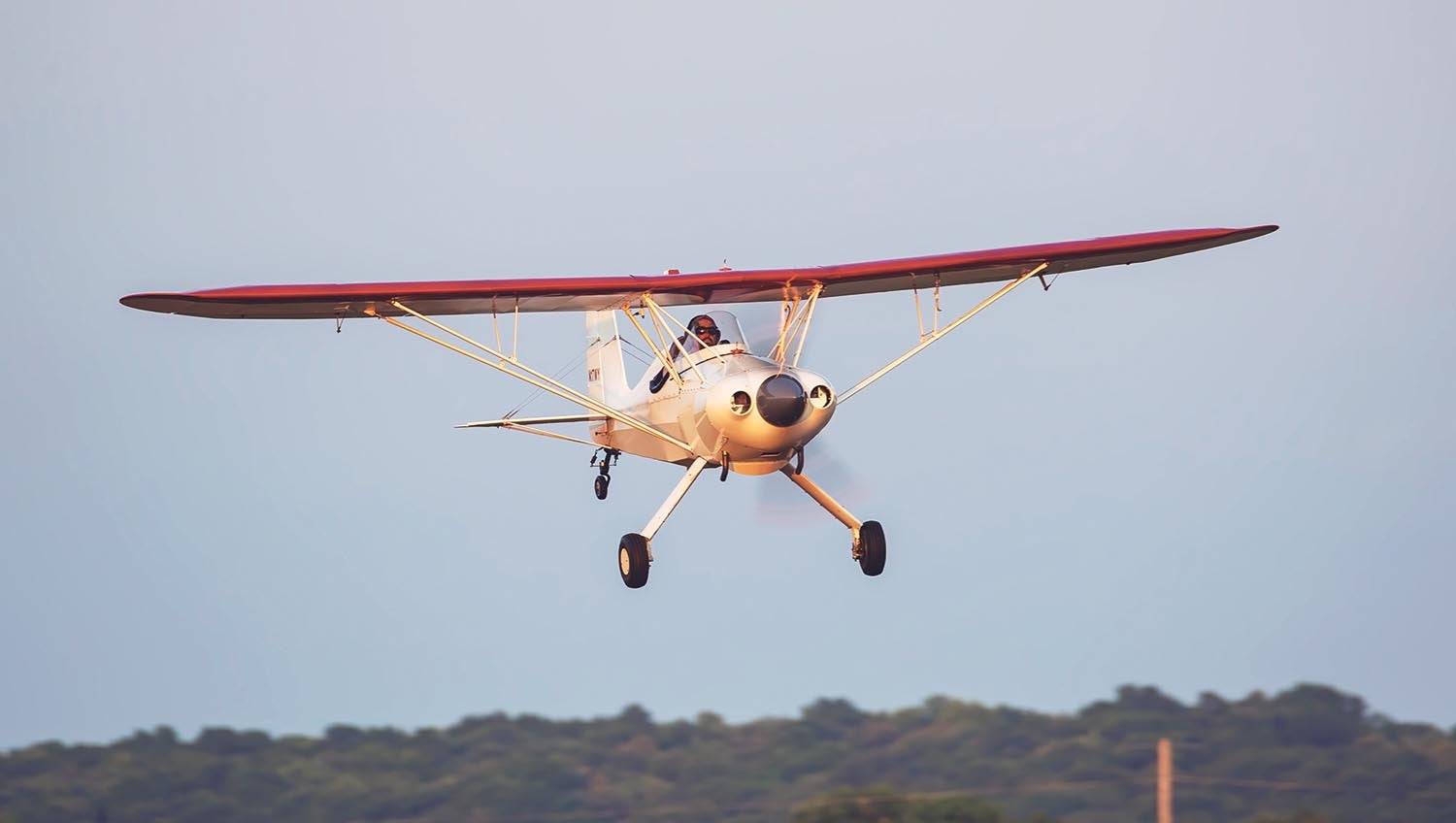
That’s a pretty small list of things to consider changing, so Justin must like the Starlet a lot. In the meantime, we can’t wait to see this beauty fly again.
Photos: Julia and Jonathan Apfelbaum and Justin Peters.





